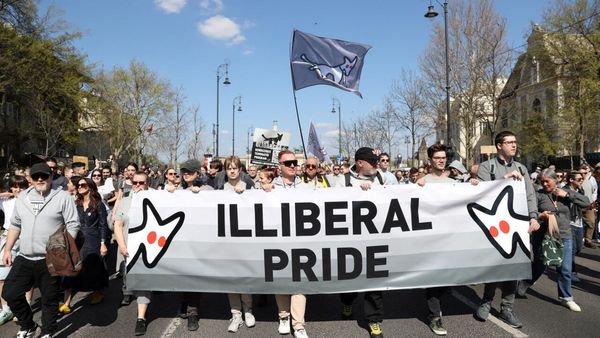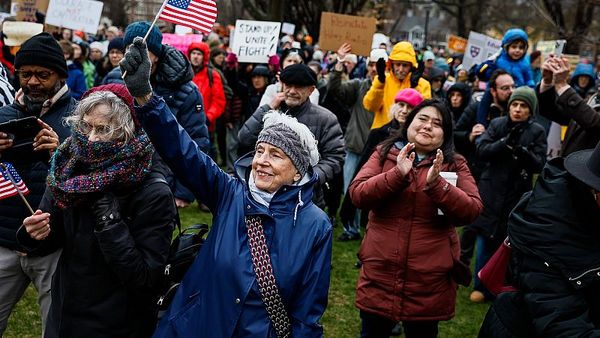The average art lover isn’t supposed to like art fairs because they’re so corporate. When you pay £9 for a sandwich and your wifi is sponsored by a big bank, you can understand the reservations. They’re also too big and crowded. Even the VIPs are left queuing to get in.
But the fair provides opportunities to see work from galleries from all over the world in London and there is plenty of good art on display. As Frieze describes itself “[it] is one of the world’s most influential contemporary art fairs, focusing only on contemporary art and living artists”. It is primarily for those in the art world, those who create, critique and those who collect, and a lot of money changes hands as the world’s galleries show the best they have. But it has also become a cultural day out.
Apart from loads of great painting and the occasional noncommercial showpiece, Frieze goes out of its way to balance the corporate with more thoughtful displays. There’s a chance to see big-name artists, international galleries and work by new artists. The “Artist-to-Artist” section returned this year, containing work by emerging talents (selected by established artists). With so much on show, Frieze can be daunting. You can easily spend a whole day at the fair, but with so much on display there is truly something for everybody.
At this year’s Frieze, international highlights included Proyectos Ultravioleta from Guatemala city, who showed miniature paintings by Rosa Elena Curruchich hung alongside larger works emblazoned with the text “me venden” (they’re selling me) by Edgar Calels. Calels also brought the smell of a forest into the booth by covering the floor with pine needles.
Jhaveri Contemporary (Mumbai, India) presented work by the Bangladeshi duo Kamruzzaman Shadhin and Gidree Bawlee. The piece Kaal (Pala) consists of seven delightful jute figures – among the most enchanting figurative sculptures I have seen recently. Joydeb Roaja’s pen drawings of people, tanks, and people with tanks on their heads are as enigmatic and disturbing as they are engaging.
Non-commercial art appeared in Jenkins Van Zyl’s Sweat Exchange at Edel Assanti (London). This video installation housed in what Van Zyl has called a sauna-cum-“sweat extraction brewery”, which features two doppelgangers, who alternate between self-care and abuse. Imagine the Pink Panther crossed with Jar Jar Binks as a drag queen and you’re nearly there.
Then there was Patrick Goddard’s silver cast bees on the floor of Seventeen Gallery, and Lawrence Lek (winner of the Frieze artist award) who has produced Guanyin: Confessions of a Former Carebot – an interactive videogame installation about an AI created to service self-driving cars.
Most of the works were are those hung on walls. Gallery booths have a small storage area in which they are able to keep paintings and prints, (but less able to store sculptural works). Collectors also favour paintings, prints and photographs to adorn their walls (or similarly put into storage) over artists’ films or video installations.
What’s to complain about though when there is so much good painting on display?
Highlights included Tom Anholt and Ryan Mosley at Josh Lilley Gallery (London); Carl Freedman Gallery (Margate), which showed great paintings by Ben Senior, Laura Footes and Vanessa Raw (as well as Lindsey Mendick’s ceramic sculptures) and Tanya Leighton Gallery (Berlin and LA), which had plenty of good painting on show, including works by Matthew Krishanu. Ingleby (Edinburgh) showed Andrew Cranston and Hayley Barker and Arcadia Missa (London) showed Lewis Hammond’s Schmetterling, an eerie blue interior with an unsettling blue-eyed figure, and Jesse Darling, whose Come on England (up the) takes a novel approach to wall-based work by leaning crowd-control barriers in the corner of the gallery booth.
Counter Editions (Margate) presented a Tracey Emin solo show. You’re not supposed to like Emin, since she outed herself as a Tory sympathiser. Opposite is a Billy Childish solo show at Lehmann Maupin (London, Seoul, New York), where the artist paints live while wearing a beret next to a dirty stepladder for reaching the tops of the large canvases. You’re not supposed to like Billy Childish either because he is a Stuckist (stuck in the age of Van Gogh and Edvard Munch – his only two art heroes). Funnily enough, Charles Thomson, co-founder of Stuckism, derived the name from an insult by Emin, who told Childish, her ex-lover, that his art was “stuck, stuck, stuck”. Don’t tell anybody, but the Emin and Childish works were quite good.
With an annual curated section, more solo shows and over 270 Galleries from more than 40 countries, if you love art in all its forms (and can afford it) you should experience Frieze London at least once. If you didn’t go this year, you really should spend a day there next. Despite what people say… you’re bound to find something you like.

Looking for something good? Cut through the noise with a carefully curated selection of the latest releases, live events and exhibitions, straight to your inbox every fortnight, on Fridays. Sign up here.
Martin Lang does not work for, consult, own shares in or receive funding from any company or organisation that would benefit from this article, and has disclosed no relevant affiliations beyond their academic appointment.
This article was originally published on The Conversation. Read the original article.







